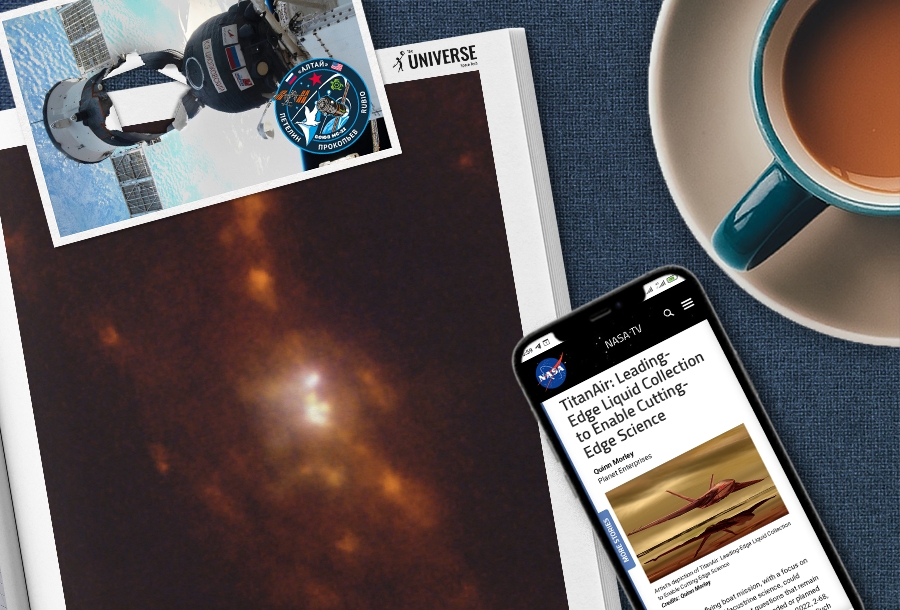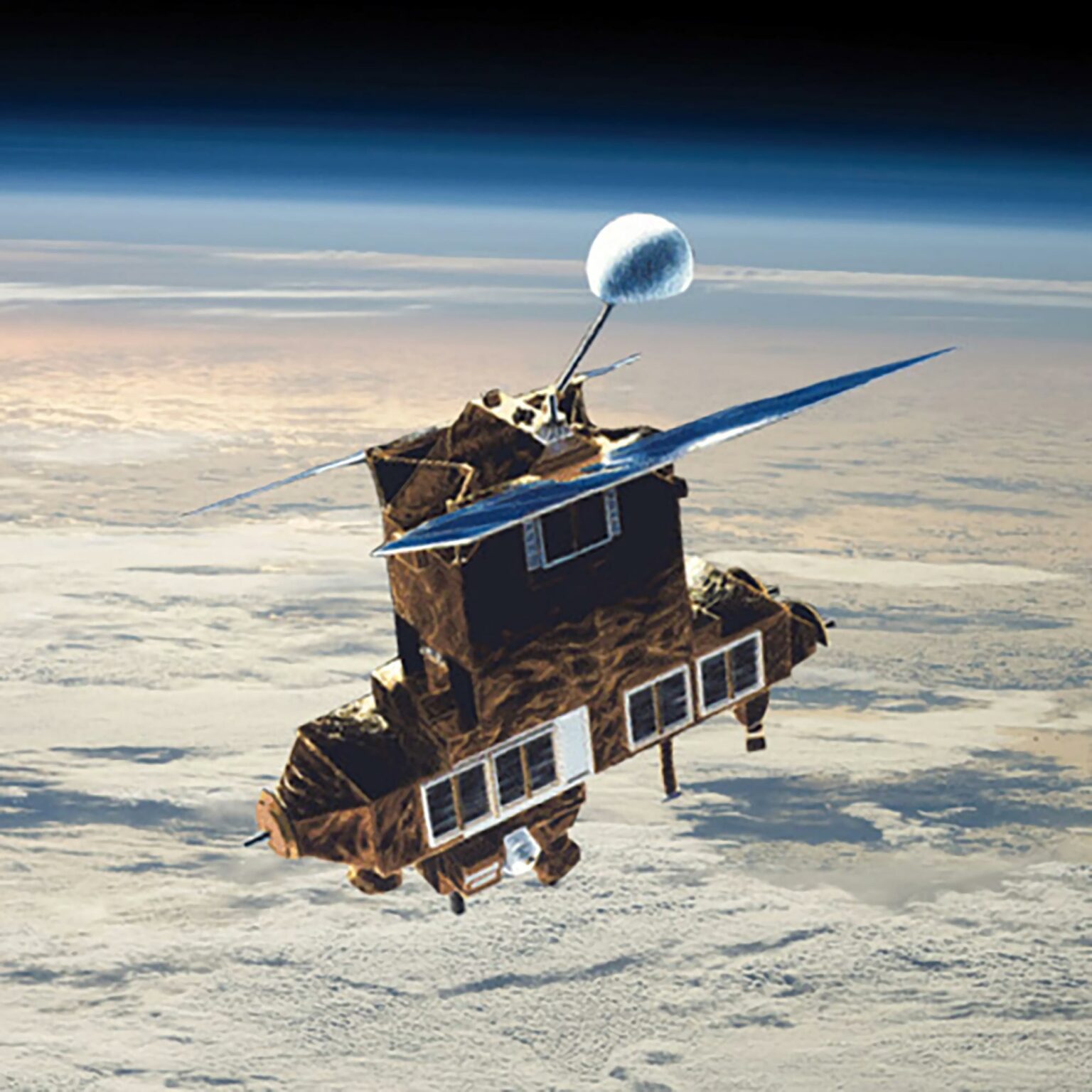Selection of the most interesting space news for the week: astronomers have discovered the closest pair of supermassive black holes; NASA will finance the development of a pipeline on the Moon, and we talk about the weather on exoplanets and the concept of a space elevator.

“Order liberates thought”
― Serhii Korolov
Soyuz MS-22 is recognized as dangerous for flight
Roscosmos has decided not to use the damaged Soyuz MS-22 spacecraft for manned flight. Cosmonauts Sergei Prokopyev, Dmitry Petelin and Frank Rubio will return to Earth aboard the Soyuz MS-23 spacecraft, which will be launched in February 2023.
On December 14, a coolant leak occurred on the Soyuz MS-22 spacecraft, which led to the complete failure of its cooling system. During the subsequent visual inspection carried out using the Canadarm2 manipulator arm, NASA specialists noticed a small hole in the radiator.
Found the closest pair of supermassive black holes
Astronomers announced the discovery of the closest pair of supermassive black holes. They are separated by a distance of only 750 light-years, which is half the distance between the previous pair of record holders. The discovery was made during the study of the galaxy UGC 4211. It is located at a distance of 480 million light-years from Earth in the direction of the constellation Cancer. UGC 4211 was formed as a result of a relatively recent merger of two galaxies. This process was accompanied by the condensation of gas clouds, which provoked a powerful flare of star formation.
Chinese rover has problems
The Chinese rover “Zhurong” faced technical problems. According to some sources, it failed to get out of hibernation mode, which might lead to the end of its mission. In May 2022, Zhurong was put into hibernation mode. This happened due to two main reasons. Firstly, winter began in the region where the rover was located. Secondly, a fairly powerful dust storm began on Mars, which made the Zhurong solar panels begin to produce less energy.
Plane on Titan and pipeline on the Moon: 14 incredible space exploration ideas
NASA has selected several new concepts of experimental space technologies that, in theory, can be implemented in the distant future. NASA’s Innovative Advanced Concepts (NIAC) program has selected 14 fascinating projects that, according to the space agency, “deserve further research”. The program will provide each of the 14 research groups with grants in the amount of 175 thousand dollars to further develop their ambitious ideas. Among all the concepts, three stand out the most.
TitanAir ― aircraft that will be able to land and float on Titan’s methane lakes, as well as collect rare samples from rivers, lakes and oceans on Saturn’s moon.
Laser propulsion system. The system is based on the existing technology of light sails for transporting spacecraft with payload through the Solar System and into interstellar space. It uses a granular beam of ultra-high-speed microscopic particles driving lasers to propel spaceсraft.
Oxygen pipeline on the Moon, which will transport oxygen extracted from ice. The concept will be used for future NASA Artemis missions. It will provide constant access to oxygen for lunar settlers and dramatically reduce transportation costs.
James Webb’s successor will search for alien life in the Universe
NASA has revealed details about the multibillion-dollar successor to its revolutionary James Webb Space Telescope (JWST) — a project which priority will be the search for life on Earth-like planets. The project starts in the early 2040s. Its working name is — Habitable World Observatory (HWO). Like the agency’s JWST, HWO will orbit at the L2 Lagrange point around the Sun, about 2 million km from Earth. At the same time, the observatory will be designed taking into account the disadvantages of James Webb. For example, HWO can be upgraded and repaired with special work.
Photo of the week
NASA released a video showing photos of some of the scientific research conducted on the ISS over the past 12 months.
2022 was very eventful for the International Space Station (ISS). Being in orbit about 400 km above the Earth, the ISS over the past 12 months has welcomed newly arrived astronauts and said goodbye to others, hospitably hosted a group of the first wealthy NASA tourists. During this time, 12 spacewalks were made, ISS avoided dangerous debris, experienced a serious accident due to a coolant leak from the docked Soyuz spacecraft.
Interesting figure — 38 years

NASA’s Earth Radiation Satellite (ERBS) returned to Earth this weekend after nearly four decades in space. ERBS has been operating in Earth orbit since 1984. During its 38 years in space, of which 21 years ERBS worked, the satellite made a significant contribution to the science of climate and weather.
The expected service life of the satellite was only two years. But it exceeded this mark. “During 21 years of work in orbit, ERBS actively investigated how the Earth absorbed and radiated energy from the Sun, and measured stratospheric ozone, water vapor, nitrogen dioxide and aerosols,” NASA reported.
Something to read on the weekend

January 12 would have been the 116th anniversary of the birth of the legendary design engineer Serhii Korolov. A man who went through Stalin’s camps and after the total repression that exterminated the intelligentsia in the country, the USSR managed to send the first artificial Earth satellite into orbit. And then he held the championship in space exploration for another 10 years. We have prepared 13 facts that will help to understand the essence of the “Korolov phenomenon”.
We also talk about the weather on planets outside the Solar System and about the concept of a space elevator — a hypothetical structure capable of completely upending the entire space industry, radically reducing the cost and simplifying the launch of cargo into orbit.
Read also: First commercial Ukrainian satellite and Solar flare: Space News Digest
Follow us on Twitter to get the most interesting space news in time
https://twitter.com/ust_magazine

